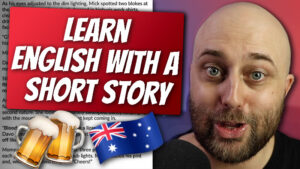
AE 380 REPLAY
How To Improve Your Australian Accent with Candice Moll - Part 2
Learn Australian English in each of these episodes of the Aussie English Podcast.
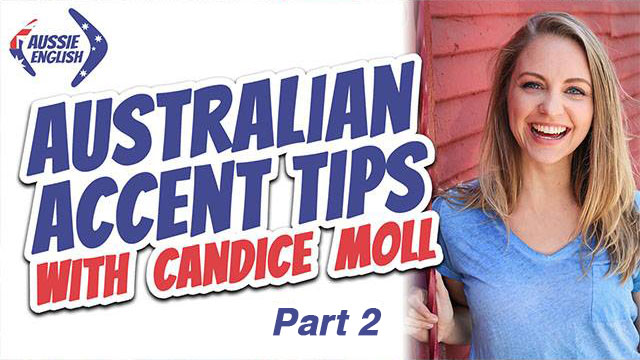
In today's episode...
Learn Australian English in this episode of The Aussie English Podcast where special guest Candice Moll teaches you how to improve your Australian accent.
This is part 2 of 2 episodes on how to improve your Australian accent with Candice Moll.
Make sure you go to Candice’s YouTube channel to watch the video, and don’t forget to hit like and subscribe to her channel!
You can also check out what Candice is up to via her website at www.CandiceMoll.com.
Thanks again to Candice for allowing me to use the audio from her videos to help you guys improve your Aussie English accent!
Keep up the hard work guys!
** Want to wear the kookaburra shirt? **
Get yours here at https://aussieenglish.com.au/shirt
Improve your listening skills today – listen, play, & pause this episode – and start speaking like a native English speaker!
Listen to today's episode!
This is the FREE podcast player. You can fast-forward and rewind easily as well as slow down or speed up the audio to suit your level.
If you’d like to use the Premium Podcast Player as well as get the downloadable transcripts, audio files, and videos for episodes, you can get instant access by joining the Premium Podcast membership here.
Listen to today's episode!
Use the Premium Podcast Player below to listen and read at the same time.
You can fast-forward and rewind easily as well as slow down or speed up the audio to suit your level.
Transcript of AE 380 REPLAY - How To Improve Your Australian Accent With Candice Moll – Part 2
G'day guys! Welcome to this episode of Aussie English, the number one Aussie English podcast with the sole focus of teaching you guys Australian English. Today is the second episode where you get to learn a bit about perfecting the Aussie English accent.
So you're getting these tips from one of Candice Moll's videos on YouTube. She's been kind enough to allow me to use the audio on the podcast here, to give you guys exposure to a female with an Australian accent, a female with an Australian accent from a different part of Australia. So unlike me, I'm from Victoria and I have a Melbourne general Australian accent.
Candice is from South Australia. She grew up in Adelaide. She's a voice actor as well as an actress. And yeah, make sure you jump over to her YouTube channel, give her a thumbs up, check these videos out because they do have a lot of movements involved where she explains what's happening with the mouth and how to make these sounds.
Make sure that you also go and visit her website at www.candicemoll.com. The links will be in this episode, guys. Anyway, that's enough of this intro. Thanks, Candice. You're a freaking legend. And guys, go over there, say hello and enjoy this episode. Let's go.
Hello, YouTube! My name is Candice and I'm here to speak to you a little bit about the Australian accent or dialect. I did a little video a while back, just with a couple of tips that I thought might interest some people, and the video got an overwhelming response.
So I thought that I would give you guys a little bit more because there seems to be an interest. So I'm going to break down a few things and hope that it helps some people who are interested in learning how to do different accents and dialects.
So the Australian accent, there are basically three types of Australian accents. If you want to know a little bit more about this in more detail, check out Aussie English on YouTube because he's got some great information, but I'll touch on it briefly.
So the first type of Australian dialect is the broad dialect. Basically, the further north you go in Australia, the broader the accent gets. A broad accent. A good example would be Steve Irwin or Crocodile Dundee. So this is what a lot of countries will think about when they think of the Australian accent. It's very stereotypical and very strong.
Second one is the general dialect. That's I think that that's what I speak. It's a bit more mild, a bit more natural sounding.
And then the third is the cultivated or received pronunciation. So cultivated it has a bit more of a British sound. It sounds a bit more posh. Usually people that speak with a cultivated accent have sometimes they've done extensive university. So highly educated. Not to say that other Australians aren't. It just seems to be a bit of a, a bit of a thing that happens when you spend 100 years at university.
Also, people who travel a lot might end up with a bit of a cultivated accent if their parents are British or if they grew up in the theatre, then they might have a cultivated accent. So they're the three.
I'm going to aim to give you a bit of a general accent. Sometimes I'll give you the broad version, so that you can- sometimes it's a bit easier to go for the exaggerated sound and then pull it back into something a little bit more natural sounding. So we'll see how we go. We'll have a bit of a play.
I'm going to give you some sounds. I'll do my very best to explain it. If I don't make sense to you, do another search and find another video because maybe someone else can. But I hope I can help some people to understand the dialect a little bit better.
So let's start with the short sounds. Our diphthongs, our long vowel sounds, they're all diphthongs and they're a bit silly. We basically take all of our short vowel sounds, mush them together, and then call it a long vowel sound. So let's deal with that later.
We'll start with the short ones. They're a bit easier. Okay! Starting with the short A sound. It's /a/. Your cheeks are nice and high, and you open your mouth wide and just make a little guttural sound in your throat and stop it with your throat and say /a/, /a/.
So I'm going to say some words. I'll leave a little bit of a space. You can repeat them back to me. Say it out loud if you need to go into a different room and close the door so no one hears you, do that. Just pause me. I'll still be here.
All right. So, first word: back. Back. And. And. At. At. Cheeks are nice and high. At. Alas. Alas. These words will confuse the Americans because we actually emphasise the first syllable in these words.
If ever there is a word that you're not sure how to pronounce, a lot of the time I might even say most of the time, if we pronounce it differently to the way that Americans pronounce it. So United States, Americans, then probably you should just emphasise the first syllable.
For example, adult. The emphasis is on the /a/ adult. Another one is address. Not address. A-ddress. And then everybody's favourite. Aluminium. Aluminium. Aluminium. Okay.
The short E sound is /e/. So drop your cheeks down from the /a/ sound and you're going to widen your mouth and just say /e/ /e/. Almost pull your chin back a bit too, /e/. End. Energy. Enter. Electric.
Electric. Sometimes we drop the C in this one too, and say /ele(c)tric/. /ele(c)tric/ or /elecTric/, depending on how lazy you feel. Both are correct. Especially. /Especially/ /e./.
And then a fun one for you. Esky! An 'esky' is a cooler or a cool box where you might put your drinks in the summertime. Esky. Just making sure my microphone is on. Good!
The short I sound. /ee/ this one, cheeks go right back up again. /ee/ so it's like you're pulling your cheeks back and saying 'eeee!' But then just keeping it really short. /ee/ It. In. Make sure that sound is nice and high. In. Is. Ill. Image. Instance. Information. Information. Information. Okay.
The short O sound. The short O sound is an /o/, so you want to make your mouth nice and long. You're making an oval shape with your mouth, and it's almost like your lips stick out just a little bit. /o/ /o/. All right. So give this a go. On. On. Off. Of. Object. Observation. And then this one's a tricky one. Orange.
So I've heard a lot of Americans say /owrenj/. It's not. It's /orenj/. /o/, okay.
You got the Short U sound. /uh/ Under. /uh/ So right. So it's just a little bit lazier than an /a/. It's more, it's just pull your sides in a little bit and just go /a/ /uh/ /a/. You see that? /uh/. Under. Up. Us. Umbrella. About. About. America. Good.
And the /ah/ sound. This is A H. So this is, this is, yeah, A H. You'll hear it. So you're going to go /ah/ /ah/. Yeah. /ah/ It's almost like a vocal warm up. /ah/ All right. Ask. Answer. Aren't. After. Good.
I'm gonna touch on the schwa sound. So the schwa is like the resting place. It's like an unstressed vowel sound. And the reason I'm going to put it right here is because it's very similar to /a/ and /uh/. It's like an in-between of those two.
So where /uh/ as in 'up' is really short, and /ah/ as in 'ask' is longer. The schwa sound is so minute, but it's in between those two. Okay, so ours, we use it as a thinking sound. We say 'um', 'um', 'um', or if we're thinking on a 'uh', so it's just really lazy, /uh/, lazy kind of sound. A
nd often it's just like, imagine you're being punched in the guts and you're going, /uh/, /uh/, it's kind of like that, too. All right.
So I don't know if this is going to make any sense to you, but see how you go with some of these words. All right, so the schwa sound: /əmazing/. /ə/, the first A, /əmazing/. So you see how it's kind of just a bit longer than /ah/ and a bit shorter than /uh/, /əmazing/. 'Syringe', the /s/, 'syringe'.
And then we also use the schwa sound in replacing an R at the end of words. So for example, after the first A is an R, and the second A is a schwa. After. Another one is 'other' 'other'. Good.
Oh! Important one: Australia Australia. We say it with four syllables. "au" is a bit of a schwa, /uh/ "stray" "lee" /uh/. Same again at the end. Australia. Good. Okay.
The /aw/ sound. This is A W /aw/. So this is a bit of a tricky one. What you're going to do is make a round shape with your lips, pull your chin back, right back towards your throat. And my tongue is, it's like the back of my tongue is lifting towards the roof of my mouth. /aw/. But because I'm pulling my chin down, it doesn't quite reach /aw/ /aw/.
Okay, so a couple of words. Awesome. Awesome. All. All. Notice how I close my chin? I bring my chin back up for the L sound. All. All. Okay.
And then we also use this sound if an O is followed by an R. /or/ as in O R /or/. Order, order. Adorable. We do pronounce the R in that one. Adorable. And last one: normal. Good.
And lucky last, short double O sound. So this one. I said this in my last video too. It's a bit like a sound a monkey makes. /o/ /o/ /oo/ /oo/. Okay, so you're just going to make a really small circle with your lips and say O and it's coming from your throat /oo/ /oo/. So I can actually feel this part of my throat. I can, I can feel that when I'm saying, /oh/, okay. /oo/. Book. Look. /oo/, look. Cook or cooking.
And then the L makes these ones a bit tricky: Cool. So it sounds like you're saying "coo-el" but it's not really that exaggerated. It's just 'cool'. Cool. Pool, is another one. Pool.
Okay, so, I'm going to leave it there for today. I hope you enjoyed yourself. I did, and I'll do another couple of videos and look at the long vowel sounds and anything else I can think of. If you have any questions, feel free to to type them out and I'll see if I can get to them in a video. Keep looking, keep learning, keep searching for new things and I'll see you next time. Bye.
Okay, guys. So that was Candice Moll from YouTube. Candice Moll, two words. Or you can find her at www.CandiceMoll.com. The links will be in the episode. I hope you enjoyed it guys. And remember to go over to her YouTube channel, give her a thumbs up and subscribe! Cheers guys! Chat soon.
Listen & Read with the Premium Podcast Player
Get more out of every episode!

Premium Podcast members get access to...
- All 900+ podcast episodes including member-only episodes
- Member-only episode video lessons
- Downloadable transcript PDFs & audio files for every episode

Recent Episodes:


AE 1299 – Pete’s 2c: Do You Ring, Call, or Dial Someone on the Phone in Australia?

AE 1298 – Learn English with a Short Story: Day at the Beach

AE 1297 – The Goss: How ‘Dropping In’ Culture Has Changed in Australia

AE 1296 – The Goss: Gorilla Glasses & Dad’s Crazy Zoo Stories – MEMBERS ONLY

AE 1295 – The Goss: Australia’s Most & Least Ethical Jobs

AE 1294 – The Goss: Australia Just Had the Best Aurora in 500 Years!

AE 1293 – The Goss: Should Aussie Schools Ban Homework?
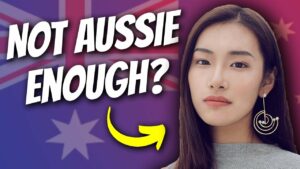
AE 1292 – How Aussie Do Asian Australians Feel? r_AskAnAustralian
Share
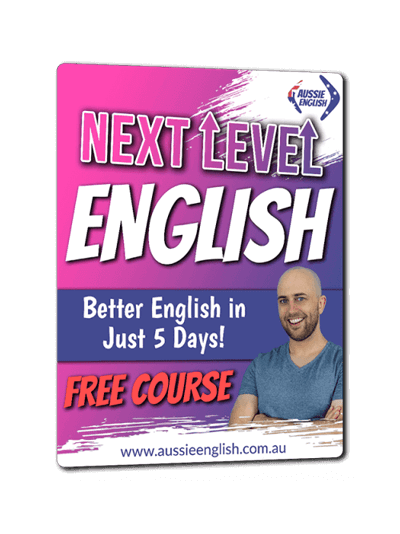
Join my 5-Day FREE English Course!
Complete this 5-day course and learn how to study effectively with podcasts in order to level up your English quickly whilst having fun!

Join my 5-Day FREE English Course!
Complete this 5-day course and learn how to study effectively with podcasts in order to level up your English quickly whilst having fun!


Want to improve a specific area of your English quickly and enjoyably?
Check out my series of Aussie English Courses.
English pronunciation, use of phrasal verbs, spoken English, and listening skills!
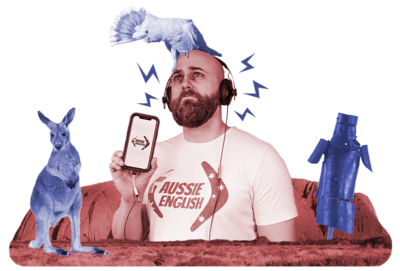
Have you got the Aussie English app?
Listen to all your favourite episodes of the Aussie English Podcast on the official AE app.
Download it for FREE below!


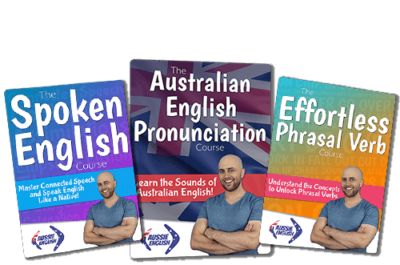
Want to improve a specific area of your English quickly and enjoyably?
Check out my series of Aussie English Courses.
English pronunciation, use of phrasal verbs, spoken English, and listening skills!
Leave a comment below & practice your English!





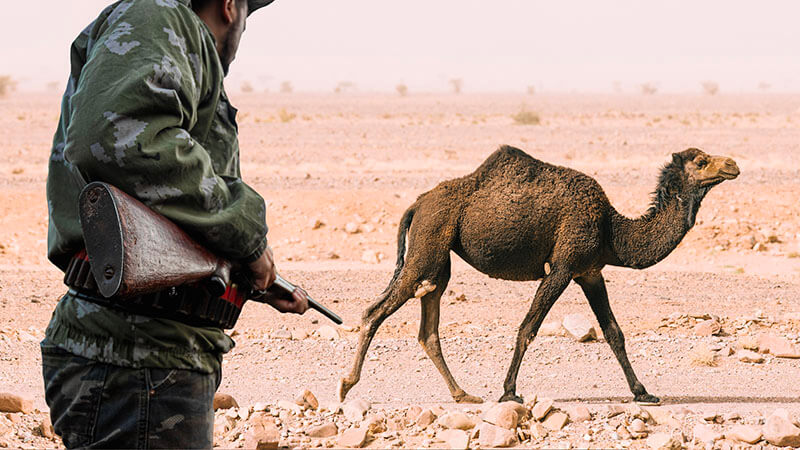
Responses